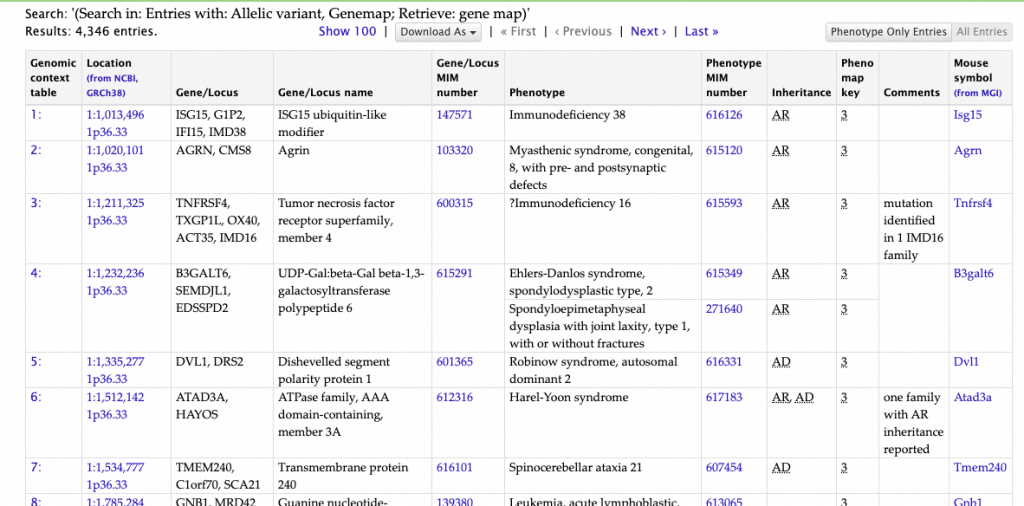In a prior blog post, the presence of dominant alleles in my genome gave me pause when trying to interpret the data from sequencing my DNA. Dominant alleles can be the cause disease when only one pathogenic variation occurs in only one gene copy of the chromosome pair. Contrast this to a recessive allele where you must get a defect in both chromosome copies of the gene to cause disease. In the recessive condition, if you only have one defective copy, you can expect to remain healthy, but you are a carrier of a disease allele. With the lack of immediate consequence to being a carrier status, many more individuals should be walking around with variations that are recessive towards disease. In fact, the CFTR gene variation (p.Arg117His) for Cystic Fibrosis that was highlighted in my Veritas Genomic sequencing report is quite common. It occurs globally at 1 per 2,500 persons, and that increases close to 1 per 1,000 for northern europeans, which is a dominant portion of my ancestral genomic composition. In contrast, the CACNA1S variant (p.Arg419His) that most concerns me in my genome, has a prevalence of 1 in 25,000. That is low enough to be considered a rare disease in Europe, but probably still too high for disease manifestation rates.
Rare domination in CACNA1S needs to be rare enough to cause Hypokalemic Periodic Paralysis
Dominant disease causality with the Arg419His variation in CACNA1S is unlikely because it is too frequent for the 1 per 100,000 population frequency for the disease of Hypokalemic Periodic Paralysis. Yet there are two variations known to be causative in CACNA1S, Arg528His and Arg1239His. Arg528His occurs at close to 1 per 100,000, while Arg1239His has yet to be detected in healthy populations. Clearly the Arg11239His is low enough population frequency to be causative for Hypokalemic Periodic Paralysis. Yet for my Arg419His, the frequency is too high for it to be causative. A variant effect that is autosomal dominant is extremely unlikely for my lone Arg419His allele.
If dominant alleles need to be rare in the population, how frequent is dominant status for variants of a disease?
The frequency of autosomal dominance for any given disease gene appears to be quite high. It is estimated that there are about 7,000 Rare Diseases. If we assume the On-line Mendelian Inheritance in Man (OMIM) already represents most of these genes, then rare disease variants will map to the 4346 gene entries in OMIM with published allelic variations. Next, I listed these variations in blocks of 100 to reveals the number of genes for which they are known to exclusively Autosomal Dominant (AD) or Autosomal Recessive (AR), or some kind of hybrid.

When one runs down the inheritance pattern and tabulates them per gene, the first 100 variants have about twice as many genes in the AR category when compared to the AD category.

Running through another 400 variants in the 100 variant blocks shows the trend continues – Dominance of a genetic conditions occurs for about 1/3rd of the disease genome.
Axiom for the individual : “I am not very dominating, but there are lots out there who are”
So at the individual basis, it appears the autosomal dominant status of pathogenic or likely pathogenic variants in your genome is very rare. Yet, at a population level, a large proportion of rare disease is caused by autosomal dominant variation. Rare disease calculate to occur at about 1 per 15 persons. So, for about 1 in 50 (150 million persons), their disease casing variation is likely to be autosomal dominant.



